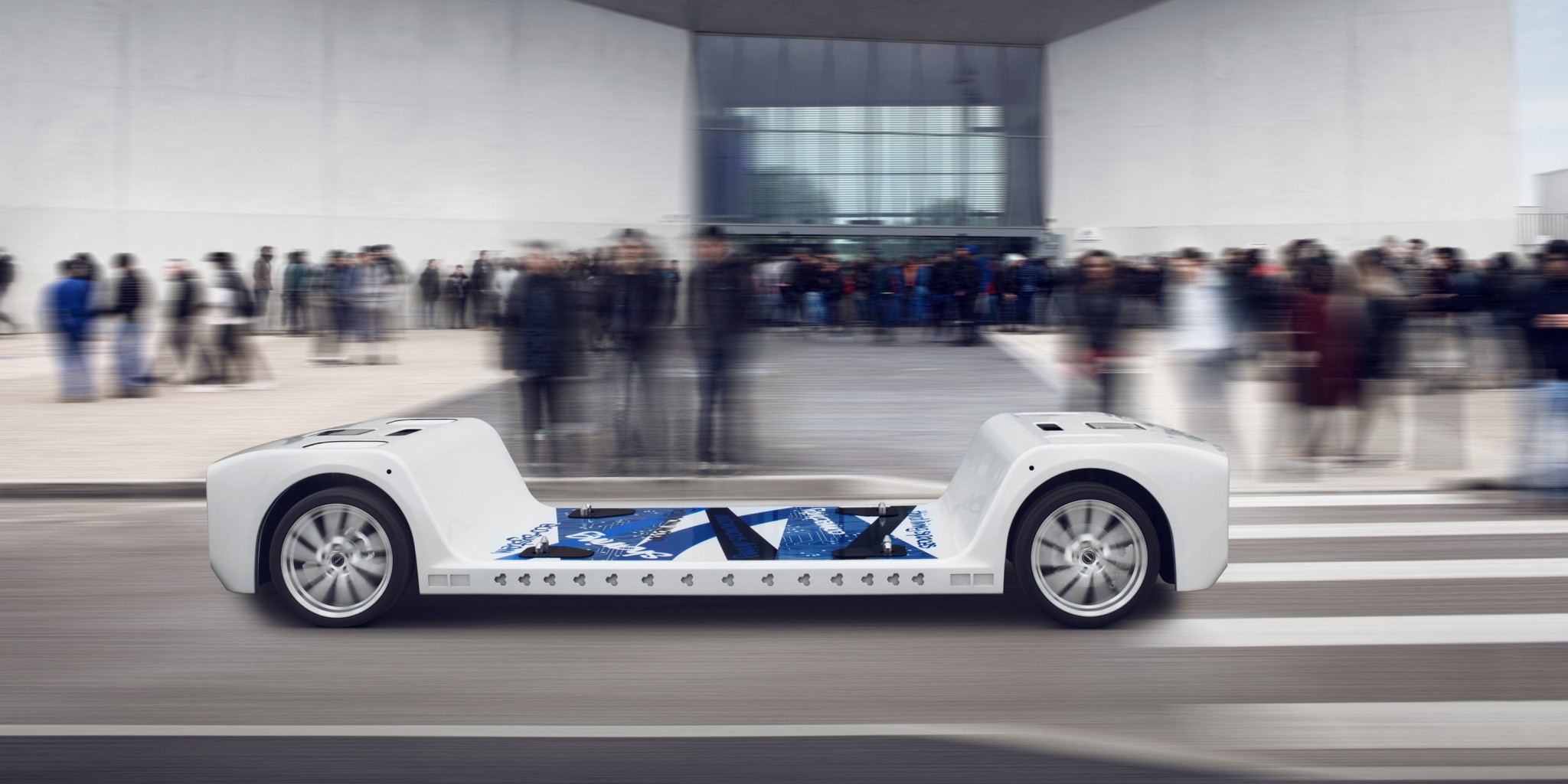Just like more and more urban citizens, tomorrow's city cars will come in the form of multi-talented workaholics. The Rinspeed Snap mobility concept is a perfect example. Because every user of a car sharing scheme has different requirements, this concept offers easily exchangeable chassis named "pods". Whether for mobile working, family transportation, goods deliveries, shopping or other tasks: Depending on requirements, the bodies click simply and quickly onto a "skateboard" in the form of the Intelligent Dynamic Driving Chassis (IDDC) from ZF. This is a platform specially developed by ZF for autonomous electric vehicles. It is responsible for all driving functions, also in the Snap system. "Just like with last year's Oasis project, we again gave ZF a leading technological role," says Swiss automotive visionary and Rinspeed CEO Frank M. Rinderknecht.
Everything is designed so that we replace and recycle the skateboard after a few years of highly intensive use, but continue to use the pods.




